The Development of States and Empires (600 BCE - 600 CE)
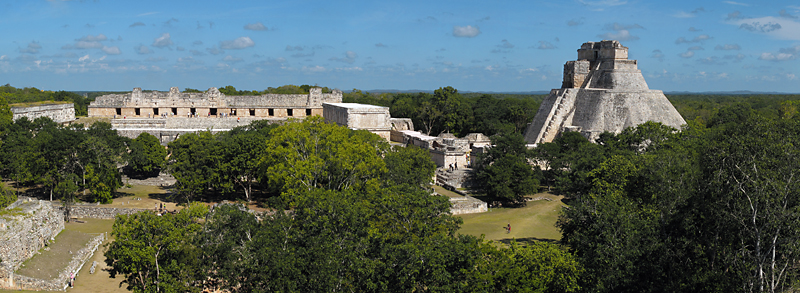 |
| View of Uxmal archeological site, Yucatan Mexico. Photo on Wikimedia Commons by Gleb Tarassenko. |
This page focuses on how ancient empires came to dominate from 600 BCE to 600 CE.
I. The number and size of key states and empires grew dramatically by imposing political unity on areas where previously there had been competing states.
The Conrad Demarest Model of Empire is often used to create a framework to study and compare empires.
- The Model is based on the the work of Geoffrey Conrad and Arthur Demarest in Religion and Empire: The Dynamics of Inca and Aztec Expansionism (New York, Cambridge University Press, 1984)
Alexander the Great and the diffusion of culture from east and west
What is an “empire,” and what were empires’ common characteristics during the Classical Era?
An empire is a large collection of peoples across a broad geographic range that lives under a common rule.
- Common characteristics included
- long trade routes across land and coastline,
- levied taxes on subjected peoples, enforced religion,
- threats from attacking barbarians,
- a system of central and local governments to maintain order, and
- armies to defend borders and maintain peace.
- Also see Peter Davidson's definition of empire.
How did the number & size of Classical empires compare to the Ancient Era?
The most influential Classical empires were fewer in number than those of the Ancient Era.
- The states in nearby areas gradually consolidated, by their own choice or by force, to form these large empires.
- Thus, the Classical empires were also much greater in size. The populations could easily reach tens of millions, compared to a few hundred thousand in smaller states.
- The empires also stretched across huge tracts of land while civilizations such as the River Valley civilization were constrained to areas surrounding rivers and riverbanks.
- Rome's Empire went across Europe to the Middle East. China spanned most of present day China.
What were the most influential of the Classical Era empires?
The Roman, Persian, and Chinese empires were the most influential.
- Other smaller empires included the Gupta empire of India and the Mayan empire of South America.
Link to Sub-Saharan African Civilizations for information on Ghana, Mali, Songhai and the Swahili city-states
Roman Republic vs. Roman Empire Crash Course video that teaches about the difference between the Roman Republic and the Roman Empire.
Persian Empire Crash Course video that teaches about the Persian Empire.
Timeline of Chinese Empires This is a link to a website that provides a helpful timeline of Chinese empires.
[Required examples of key states and empires (Student should know the location and names): Southwest Asia: Persian Empires; East Asia: Qin and Han Empire; South Asia: Maurya and Gupta Empires; Mediterranean region: Phoenicia and its colonies, Greek city-states and colonies, and Hellenistic and Roman Empires; Mesoamerica: Teotihuacan, Maya city-states; Andean South America: Moche]
Link to PreColumbian civilizations in the Americas
Greek City-States
Roman Empire
![]() Learn about Ancient Rome 3D on Google Earth from this YouTube video.
Learn about Ancient Rome 3D on Google Earth from this YouTube video.
How were the Romans able to control and regulate their massive empire?
- The ORBIS Project from Stanford University is a simulation that demonstrates how civilians, merchants, military officials, etc. traversed the Empire and how quickly and effectively travel was.
[Teach one illustrative example of Persian Empires, either from the list that follows or an example of your choice: Achaemenid, Parthian, or Sassanid]
II. Empires and states developed new techniques of imperial administration based, in part, on the success of earlier political forms.
The creation and fall of the Roman Republic allows the creation of the Roman Empire.
![]()
A comprehensive podcast on the history of the Roman Republic.
A. In order to organize their subjects, the rulers created administrative institutions in many regions.
[Required examples of administrative institutions: Centralized governments and Elaborate legal systems and bureaucracies]
What techniques did Classical empires create to administer their territories?
China developed the best communication lines throughout the kingdom – messages could be easily sent and received. Rome built the greatest infrastructure, consisting of roads, aqueducts, and cities. All three empires relied on violence and military threat to maintain order to some degree, Persia most notably. Standardized taxes were levied on citizens to raise revenue.
[Teach one illustrative example of regions where rulers created administrative institutions, either from the list below or an example of your choice: China, Persia, Rome, South Asia]
B. Imperial governments projected military power over larger areas using a variety of techniques.
[Required examples of such techniques: Diplomacy, Developing supply lines, Building fortifications, defensive walls, and roads, and Drawing new groups of military officers and soldiers from the local populations or conquered peoples]
What new political methods were created in order to rule the larger empires in the Classical Era?
Many times, a central ruler would command from a capital city, leaving localized rulers to direct smaller regions or towns. This sometimes led to insubordination and small rebellions. Dynasties were set up to create successive lines of imperial rule, as seen in Chinese families, the Roman emperors, and Persian kings. In Rome, there was also an influential senate and imperial advisory counsel.
Potential invasion coming: Do you have what it takes to build a wall to save your people?
How did imperial governments let their population know that the government was “in charge?”
Many imperial governments asserted their power by claiming to have divine connections. In most empires, one common religion was enforced. While governments allowed citizens to keep their respective religion, minorities were often taxed and vulnerable to religious persecution. They also taxed citizens and their conquered territories reminding them that they were the subjects of the government.
C. Much of the success of the empires rested on their promotion of trade and economic integration by building and maintaining roads and issuing currencies.
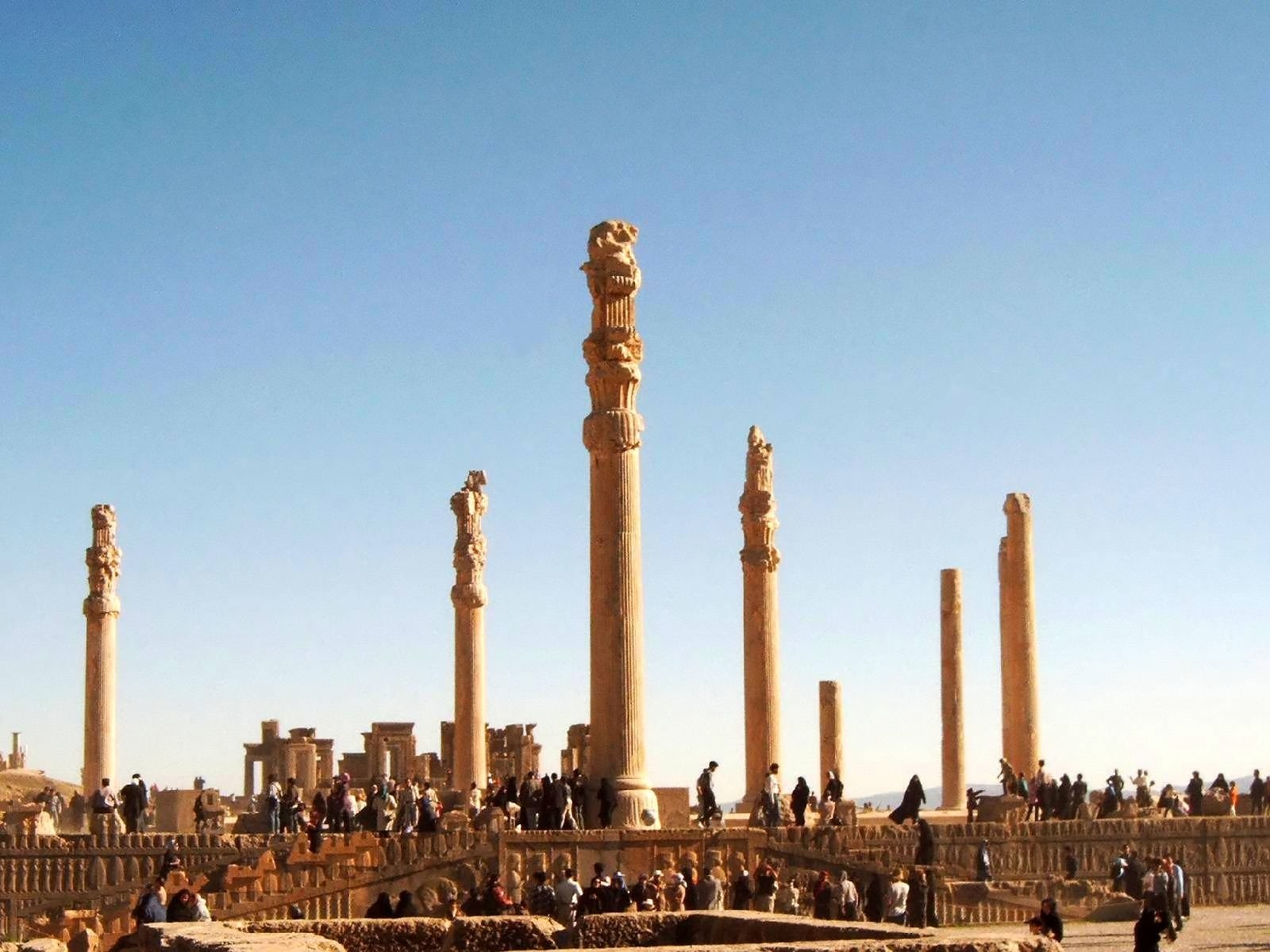 |
| Persepolis in Iran |
What role did trade play in creating and maintaining empires?
Trade enabled states to gather wealth and increase in size and influence. States that produced high demand products like silk could trade them and become wealthy. Empires like Persia which controlled major trade routes could also profit by taxing goods that passed through their territory. Amassing money was important for empires to stay in control. Wealth was needed to build armies.
III. Unique social economic dimensions developed in imperial societies in Afro-Eurasia and the Americas.
What unique social and economic characteristics existed in empires?
Empires contained a wide variation in social and economic levels.
- In Rome, members of the senate had a higher social position than average citizens and there were varied levels of citizenship. There were also slaves.
- In China, classes ranged from upper class nobles and scholars to farmers and artisans to the less respected merchants.
- Persian classes included kings and nobles of various regions, high class military leaders and clergy, then artisans, tradesmen, and peasants.
A. Cities served as centers of trade, public performance of religious rituals, and political administration for states and empires.
Sun pyramid alongside Valley of the Dead in Teotihuacán. Photo by Patricio Athie
[Teach one illustrative example of cities, either from the list below or an example of your choice: Persepolis, Chang'an, Pataliputra, Athens, Carthage, Rome, Alexandria, Constantinople, Teotihuacán
Rome as a center of trade, politics, and culture
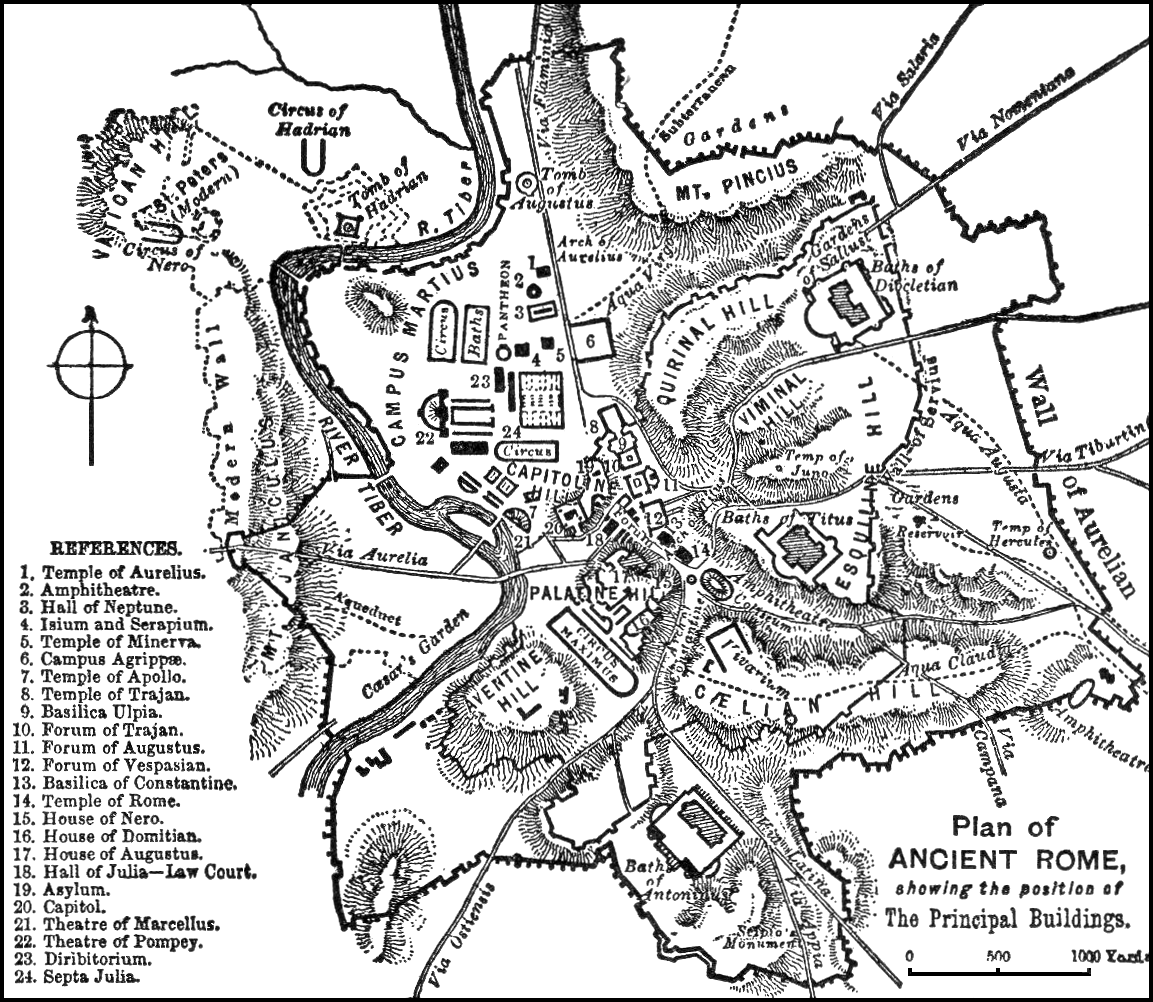
Trade
Rome served as an important center of trade because it was situated in the middle of multiple trading routes.
Various sea routes through the Mediterranean and Black Seas brought many foreign imports, most of these imports arriving at the port of Ostia.
Ostia was about 15 miles from Rome, and brought traders from places like Spain, France, North Africa, and the Middle East.
Rome was also able to trade because of the Roman Empire's network of roads, built for both transporting soldiers and exports/imports.
Politics
Rome served as a center of political administration for the Roman Empire because it served as a home base for all political leaders. The chief officials of Rome were called consuls and there were two of them, and there were also other elected officials. These officials included tax collectors, judges, magistrates, and the rich and powerful who governed the city from the Senate. The Senate was Rome's governing body, and although these powerful families lost power under the emperors (once the Republic fell), they still had power over public opinion.
Culture
Rome served as a center of culture because of the many people and cultures they became familiar with. Rome was home to many theaters, gymnasiums, forms or architecture, and forms of visual arts. Food in Rome was relatively simple and much of it was based on a Greek diet; olives, vegetables, bread, and sometimes meat and fish. Slaves were very common in Rome, and actually accounted for about 25 percent of the population. Sports were very popular among the youth (wrestling, boxing, jumping, racing, and ball games), and there were many ancient board games that were played. The Colosseum in Rome could hold 60,000 and was open to the public to watch fights and mock battles.
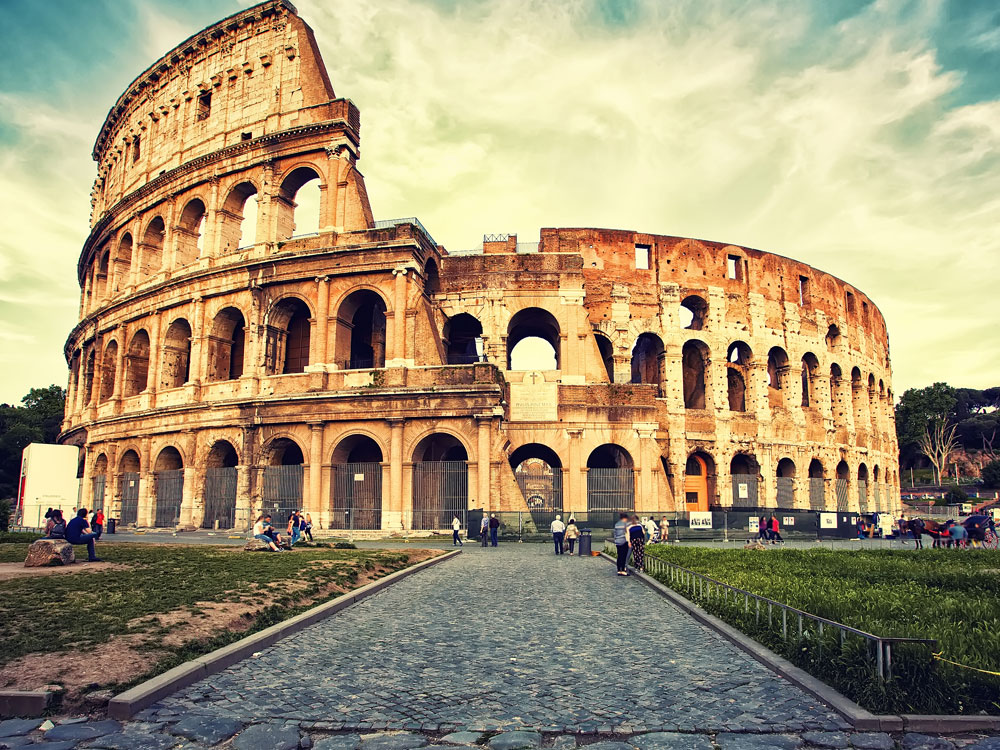
What function did imperial cities perform?
Imperial cities were centers of trade and government. In cities, especially those placed on key trading routes, many merchants could come together and exchange goods. Rulers also positioned themselves in cities, where they could display their power.
Dramatic Event Page on The Destruction of Pompeii
B. The social structures of empires displayed hierarchies that included cultivators, laborers, slaves, artisans, merchants, elites, or caste groups.
What social classes and occupations were common in empires?
Empires had a single ruler called an emperor.
- Since empires were spread over so much area, they also needed governors for each region.
- There was also a large number of people employed in keeping the empire going including local and military officials.
- Other occupations included farmers and artisans. Social class was often determined by which area of the empire you were from, especially where empires spanned multiple cultures.

C. Imperial societies relied on a range of methods to maintain the production of food and provide rewards for the loyalty of the elites.
[Teach one illustrative example of such methods, either from the list that follows or an example of your choice: Corvee, Slavery, Rents and tributes, Peasant communities, and Family and household production]
Mayan Food Production
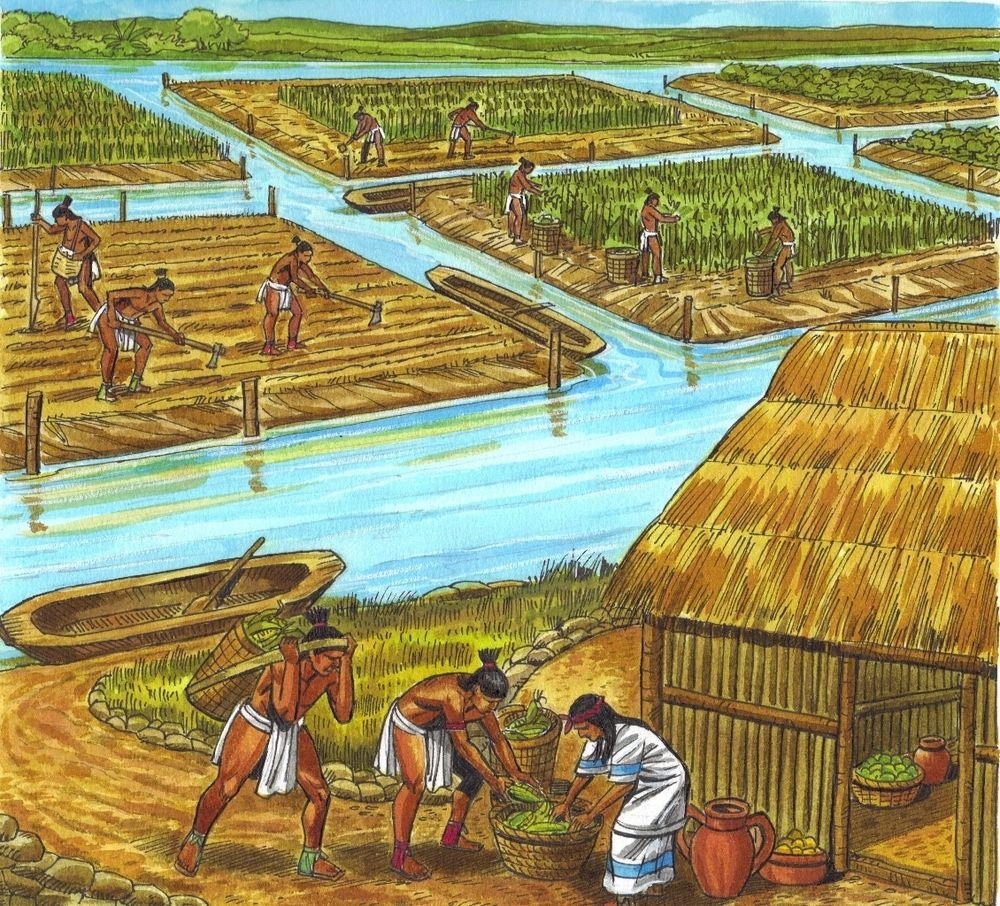
For the Mayans, food production was closely tied to astronomy and religion.
- The Mayans had important rituals and ceremonies to celebrate the gods of specialized laborers, such as the maize god.
- The Mayans relied mainly of the success of agriculture, and found many ways to make their land fertile and suitable to crop growth. Some of these methods include slashing and burning land, clearing forests, raising crop fields near rivers, and planting various crops together to take advantage of fertile land.
- For communities that didn't have large areas of fertile land, they could trade slaves, salt, precious metals, feathers, and shells for food.
- Most lower class Mayans were farmers and had to give some of their crops to the rulers, and often also had to "pay" these rulers in salt or cloth.
- Basically, the lower class provided the upper class with food and labor, while the upper class provided the lower class with religious ceremonies and entertainment.
![]()
Mayan Agriculture and Life of Commoner Youtube video about Mayan Agriculture and the life of a commoner in Mayan society.
What labor systems provided the workers for Classical Empires?
The Romans provided workers by enslaving the people they conquered. Although it was outlawed by Cyrus the Great in Persia, it was still present there as a source of labor. The Han dynasty also utilized slavery as a source of labor.
-
Link here for characteristics of slavery under the Romans
D. Patriarchy continued to shape gender and family relations in all imperial societies of this period.
What were gender and family structures of Classical Era empires?
![]()
Women in Ancient Rome is a PBS resource that will show just how women fit into Roman society.
- In China, family structures were based on Confucianism, which was based on relationships within a family. Typically fathers were at the top of the family, their sons were second, mothers were third and the son’s wives were the lowest in the family. For the most part, men dominated in the family structure in China. In China, loyalty to the family was considered to be very important.
- In Persia and Rome, gender played a greater role than family structure. Men performed jobs and left the home to earn wages. Women stayed home and took care of family and chores. Women married at a young age, some in their teens to men who were in their twenties.
IV. The Roman, Han, Persian, Mauryan, and Gupta empires created political, cultural, and administrative difficulties that they could not manage, which eventually led to their decline, collapse and transformation into successor empires or states.
What caused Classical Empires to decline, collapse, or transform into something else?
Several factors combined to lead to the fall of the Classical Empires. External forces, like the Germanic tribes and steppe dwellers outside of the Han dynasty, were jealous of Classical Empire wealth. This led them to invade these empires, which were weakened by being so spread out, to gain the benefits of being a Roman, Persian or Hani. Empires also declined due to moral decline, as empires grew comfortable with their lives of luxury. This created weakness that could not hold up against outside forces. The Classical Empires also deviated from their core beliefs from when they were growing. For example, Roman soldiers lost pride in fighting for Rome, and only cared about money, resulting in weaker defenses from external forces.
What were the environmental and social weaknesses of Classical Empires?
Social weaknesses are the moral declines that Classical Empires went through. This includes Roman emperors that became materialistic and increased tax pressure on the poor while the rich evaded taxes.
Environmental causes for the decline of the Classical Empires included the external forces that resulted from lack of inclusiveness and over extension on the part of the empires. This made the empires harder to defend and more money had to be put towards excluding outsiders. This hurt the economy and helped create even more weaknesses in the Classical Empires.![]() Ancient Rome 3D Curriculum Competition features lesson plans using Google Earth.
Ancient Rome 3D Curriculum Competition features lesson plans using Google Earth.
How were the Romans able to control and regulate their massive empire? The ORBIS Project from Stanford University is a simulation that demonstrates how civilians, merchants, military officials, etc. traversed the Empire and how quickly and effectively travel was.
A. Through excessive mobilization of resources, imperial governments caused environmental damage and generated social tensions and economic difficulties by concentrating too much wealth in the hands of elites.
[Teach one illustrative example of environmental damage, either from the list below or an example of your choice: Deforestation, Desertification, Soil erosion, Silted rivers]
B. External problems resulted from security issues along their frontiers, including the threat of invasions.
[Teach one illustrative example of external problems along frontiers, either from the list that follows or an example of your choice: Between Han China and the Xiongnu, Between the Gupta and the White Huns, Between the Romans and their northern and eastern neighbors.]
What external weaknesses contributed to the end of Classical Empires?
For the Romans, Germanic tribes’ jealousy of their wealth led to invasions that the Romans could not fend off due to preoccupation with wars against the Persians. The Han faced steppe landers from the west were absorbed into the Han dynasty, which resulted in the weakening of the Han dynasty. Persians were taken down by a unified Greece that banded together when Persia invaded to take over trade in the region. Eventually, Alexander the Great conquered Persia.